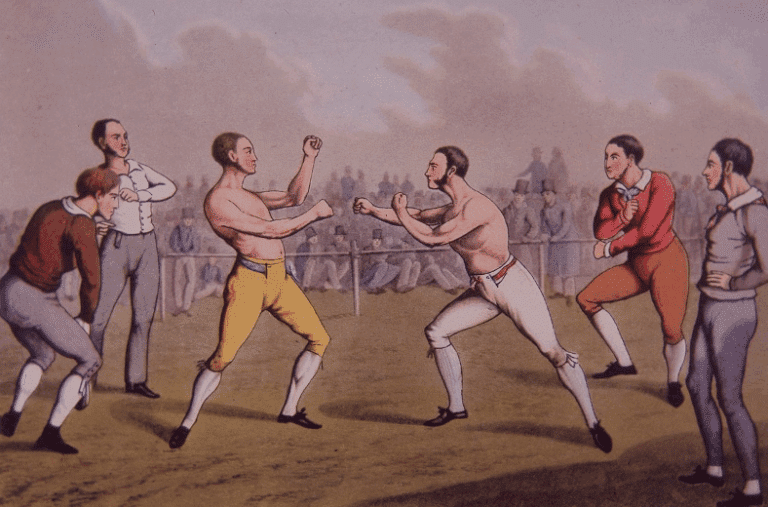In the summer of 1981, the unionized workers at Canada Post walked off the job for the fourth time in seven years. Throughout the pre-Internet era, mail strikes annoyed and inconvenienced residential customers and caused grave hardships for many Canadian businesses. For upstart weekly newsmagazine Alberta Report, based in Edmonton and run by veteran conservative journalist Ted Byfield, it was an existential threat. Without regular mail delivery, there was no way to get the magazine to its 45,000 subscribers or collect their crucial subscription cheques.
“We were always on the verge of financial problems at the best of times, but a postal strike meant almost certain bankruptcy,” recalls Robert Tomkinson, production manager of the magazine at the time. Never one to accept failure, Byfield quickly came up with a response: the Alberta Report Postal Emergency Service.
Delivery boys were recruited from local Catholic schools – a reflection of the loyalty the magazine had earned from church-goers for its socially conservative editorial stance – and writers and editors drove them around the province, dropping off issues and picking up cheques. When this improvisation proved sufficiently reliable, Byfield boldly offered mail service to the entire province.
A $1 stamp was designed that declared, René Magritte-style, “This is not a postage stamp,” and featured a pattern of tiny one-fingered salutes, presumably aimed at Liberal Prime Minister Pierre Trudeau. “The idea was that we could charge a dollar, and deliver any package anywhere in Alberta,” Byfield said later in reflecting on the scheme’s unlikely success, both financially and as a public relations stunt. “The Globe & Mail gave it an eight-column line above the fold on Page One.”
Never one to accept failure: Alberta Report newsmagazine was often “on the verge of financial problems,” but Ted Byfield always found a way to make its presence felt and its voice heard. (Source: Vince Byfield)
By the time the month-and-a-half-long strike ended, Byfield had made enough money from delivering the mail and selling new subscriptions to assume full ownership of the magazine and set a course for future expansion. It would be one of the rare times a business venture of his rested on firm financial footing. More importantly, it cemented the status of Byfield and his magazine in the province’s political and cultural landscape.
By the early 1980s Alberta Report had become the pre-eminent expression of Albertans’ growing sense of discontent with how Canada was run. Its fiery response to the Trudeau government’s National Energy Program (NEP) – alongside numerous other federal policies and inclinations that disadvantaged westerners and their interests – gave the small regional magazine an influence that far outweighed its circulation. The magazine was later responsible for popularizing such key concepts and slogans as “Triple-E Senate” (which Byfield himself coined) and “The West Wants In.”
The postal strike was thus yet another injustice perpetrated on the West by central Canada. And Byfield’s response once more offered Albertans the opportunity to figuratively raise their middle fingers in catharsis. It was one of many unlikely, ambitious and wildly provocative schemes that characterized his entire career and left a lasting impression on regional politics, national journalism and the thousands of friends, employees and associates he accumulated over the decades. With his death on December 23 at 93, western Canada lost one of its greatest champions.
‘Whether it was genetics or culture, Ted was born to be a journalist,’ recalls Stephen Hopkins, a long-time editor at Alberta Report. ‘It was his calling, in the biblical sense.’
A Newsman Born and Bred
Edward Bartlett Byfield was born in Toronto on July 10, 1928 to Caroline (née Gillett) and newspaperman Vernon Byfield. His early home life was neither conservative nor traditional, although he never complained about it in adulthood. “I suppose modernity would say I had a troubled childhood,” he wrote in 1996. “Violent, dysfunctional home, drunken father, etcetera. But…I believe I was well-served by both parents.”
As a teenager, he attended Lakefield College School near Peterborough, Ontario and in 1945 moved to Washington, D.C. where his divorced father wrote for the Washington Post. Working as a copy boy at the paper, the younger Byfield displayed early promise as a writer with a front-page scoop about how the city’s bus drivers despised their customers. “Whether it was genetics or culture, he was born to be a journalist,” recalls Stephen Hopkins, a long-time editor at Alberta Report. “It was his calling, in the biblical sense.”
Partners for life: Journalists Ted and Ginger Byfield worked closely together throughout their 65 years of marriage; at right, the couple in the newsroom of the Timmins Daily Press in 1950, with Ginger at right foreground and Ted sitting at the desk, back left.
After discovering the Post required its reporters to have a degree, Byfield returned to Canada to pursue his chosen craft. While working at the Ottawa Journal in 1948, he found himself infatuated with student intern Virginia (Ginger) Nairn. “I was absolutely floored by her,” he later recalled. “I said to myself, ‘I’ve absolutely got to get her.’”
A summer love affair that was strongly opposed by Nairn’s mother soon followed, and the next year the two moved to northern Ontario to work for the Timmins Daily Press. There the editor insisted they marry immediately – a task accomplished between the paper’s morning and evening editions. From then until her death in 2014, they formed an indispensable professional partnership, with Ginger serving as Ted’s personal editor and rudder to his many exuberant plans. They would have six children: Mike, Link, Philippa, Mary Frances, Vincent and Thomas.
At the Winnipeg Free Press in the mid-1950s, Byfield established himself as a reporter of exceptional skill and audacity; he once climbed into the city hall ductwork to overhear a secret meeting. At the peak of his career as a salaried journalist, however, the Byfields were also devouring the works of Christian apologist writers including Dorothy L. Sayers, G.K. Chesterton and C.S. Lewis, prompting a significant career change.
School Days

“We came to the conclusion that the Christian church needed to be more active in education and the general media,” Byfield said later. This led to the founding of the Company of the Cross, a traditionalist lay order of the Anglican Church. In 1957 the organization opened St. John’s Cathedral Boys School in Selkirk, Manitoba. Five years later the school shifted from part-time to full-time study and Byfield quit journalism to teach history.
“It had pretentions of being an elite boy’s school in the style of Lakefield. But essentially it was a school for troubled kids,” recalls Mike Maunder, who attended St. John’s in 1961 as a teenager and later became headmaster at a branch school in Ontario. According to Maunder, the school stressed Byfield’s belief in a “muscular Christianity” with emphasis on strict discipline, traditional subjects such as rhetoric and logic, and plenty of vigorous outdoor activity such as canoe tripping.
In 1968 the Byfields moved to Edmonton to open a new St. John’s school southwest of the city. A printing press was subsequently acquired to provide income for the school, and a contract to print weekly real estate listings proved sufficiently lucrative that Byfield was finally able to set in motion the other half of the Company of the Cross’ ambitious agenda to remake society through education and the news media. “Ted wanted to create a media outlet that would promote Christian rather than secular values,” recalls former production manager Tomkinson, then a member of the Company of the Cross.
Back in Print
The first issue of the city-focused newsmagazine Saint John’s Edmonton Report appeared on November 7, 1973. A Calgary edition followed a few years later and the two outlets were merged into Alberta Report in 1978. Subject matter in those early days was heavily influenced by religious matters.
Perhaps mindful of how the Washington Post had treated him as a copy boy, Byfield chose an unorthodox hiring policy with his new magazine. Writers were recruited from across North America with an ad that promised “An Adventure in Western Canada.” No experience or education was required. Staff lived communally and earned $1 a day (since they were technically members of the Company of the Cross), with a cigarette allowance that doubled their take-home pay.
With Byfield at the helm and supplying an invariably fiery and often funny weekly back-page column, Alberta Report offered a much-needed regional alternative to the conformity of mainstream, central Canadian-owned print media, tackling head-on numerous controversial topics from a conservative angle.
The magazine eventually split from the religious order and came to be operated in a more conventional manner, with a broader focus on provincial and federal politics as well as business and the energy sector, sports, farming, “crime and calamity,” human interest and the arts. But Byfield remained convinced that reporters were best trained on the job, a belief that enabled him to shape a generation of Canadian journalists in his own image. “He did not require people to have formal journalism training. In fact, he preferred it that way,” says Ken Whyte, a writer and editor at Alberta Report from 1983 to 1988, in an interview. A diaspora of Alberta Report alumni has since filled Canadian newsrooms.
Whyte, founding editor of the National Post, as well as former editor of Maclean’s and Saturday Night magazine, and currently owner and president of Sutherland House Books, may be the most accomplished graduate of Byfield’s personal school of journalism. But he is certainly not alone. Others include Eric Reguly, European Bureau Chief for The Globe and Mail, National Post columnist Colby Cosh, Rebel News founder Ezra Levant, Edmonton Sun columnist Lorne Gunter, Calgary Sun columnist Rick Bell, Chris Champion, editor of The Dorchester Review and Paula Simons, formerly an Edmonton Journal columnist and now independent senator for Alberta.

With Byfield at the helm and supplying an invariably outspoken and often funny weekly back-page column, Alberta Report offered a much-needed alternative to the conformity of mainstream, central Canadian-owned print media, tackling head-on numerous controversial topics from a conservative angle. Among the magazine’s many obsessions: big government, soft-on-crime justice policies, abortion, Quebec separatism, Vatican II, feminism, gay rights, the CBC and corporal punishment. The objects of Alberta Report’s trenchant criticisms often went wild with anger. The Byfields and Alberta Report were frequently denounced on the pages of leading newspapers and threatened with lawsuits by those they wrote about; they were also lampooned in a full-length theatre production and by university student newspapers. Occasionally, they even had packets of human feces delivered to their doorstep.
The magazine’s biggest and most enduring fixation was the West’s place in Canada and everything that went with it – that is to say, the favouritism routinely extended by Ottawa to Quebec and the many federal policies and structural shortcomings that ignored or damaged the rest of the country in order to further central Canadian interests. “In a Canadian Triple-E Senate, the closing of a fish plant in Twillingate or an oilseed plant in Lloydminster would be every bit as important as the closing of an automobile plant in Oakville,” he wrote in 1992. “Whatever pious platitudes may be issued to the contrary, the fact is in Canada today it just isn’t.” The same can be said about the present day.

Byfield was also an extremely talented journalist with very high standards. “Ted understood that controversy is at the core of good journalism,” adds Whyte. “But he would never accept a one-sided job from his writers. He always wanted two opposing views to battle it out within a story in an effort to convert the readers – that was the whole point of the magazine.” Byfield’s deep commitment to the craft of journalism was noted even by his many critics. An obituary by outspoken left-wing blogger David Climenhaga grudgingly noted that “Mr. Byfield was a skilled and entertaining writer who knew how to compose a column that would get noticed.”
The West and its Discontents
Alberta Report climbed to the peak of its circulation and influence largely through its relentless opposition to Trudeau’s NEP, which was unveiled in 1981 and soon devastated Alberta’s economy.
Byfield threw his considerable influence behind efforts to create a new Canadian protest party to enunciate regional political grievances that continued even after the Trudeau government was replaced by the Progressive Conservative government of Brian Mulroney in 1984. A key moment in this process was the Western Assembly on Canada’s Economic and Political Future, a summit held in Vancouver in 1987 (and heavily advertised in Alberta Report) meant to decide on how best to express this ongoing sense of frustration in western Canada.

At the Western Assembly, Byfield gave the “best and most inspirational speech,” recalls Preston Manning; the address proved crucial in convincing the audience to back a new party rather than indulge in separatist sentiment. “He was very influential at the time, and it was significant that he came down on the side of ‘The West Wants In’ rather than ‘The West Wants Out,’” adds Manning. The new political venture soon became known as the Reform Party of Canada, with Manning as its leader.
Whyte, who covered the Western Assembly and the growth of the Reform Party for Alberta Report, notes that Manning’s own rise to leadership was also heavily dependent on Byfield’s backing. “At the time, Manning was one of a dozen or more people wandering around Alberta complaining about the Mulroney government and looking to capitalize on the hatred towards Ottawa,” says Whyte. “Ted met with almost all of them, but he was really taken with Manning and his approach. It was crucially important to Manning’s credibility that he had the approval of Alberta Report.” The magazine was widely considered to be the publication-of-record in chronicling the Reform Party’s growth.
No account of Byfield’s life is complete without noting his gift for friendship and ebullient sense of hospitality. In contrast to the gruff and unforgiving ‘paleoconservative’ image promoted by critics, Byfield was neither personally judgmental nor dour.
In an introduction to The Book of Ted: Epistles from an Unrepentant Redneck, a 1998 collection of Byfield’s back-page columns, political commentator David Frum wrote that “unless you’ve read Mr. Byfield, you won’t ever properly understand the anger of the West at Central Canada, the reasons for the destruction of the once-unbreakable Conservative grip on the West, and the birth of the Reform Party.” To update Frum’s analysis, an understanding of Byfield is also necessary to grasp the eventual success of this movement as it matured and reinvented itself into the Conservative government of Prime Minister Stephen Harper from 2006 to 2015. It is an impressive accomplishment, even if Byfield himself tended to underplay his role.
The Power of the Purse Versus the Power of the Pen
Byfield’s greatest failing was undoubtedly his inability to turn his many ambitious ideas and obsessions into permanent successes. After several financial reorganizations of Alberta Report and its spinoffs, which included Western Report, BC Report and The Report, the magazine folded for good in 2003. And the last St. John’s school was closed in 2008.
“He was a very charismatic man with a tremendous ability for raising money,” says Keith Bennett, an associate and friend of Byfield for 65 years. “But he was never really good at earning money.” It was a flaw that Byfield himself readily admitted. “I’ve never been much of a businessman. I was always able to raise money, but I didn’t have the proper brain to spend it. Everyone has something they can’t do,” he told writer Jonathon Van Maren in a recent interview. Van Maren is currently writing a biography of Byfield slated for release in the next year, tentatively entitled Prairie Lion.

Despite the financial problems that nearly always attended his projects, not all of Byfield’s accomplishments proved temporary. After Byfield relinquished day-to-day control of the magazines to his son Link in the late 1980s, he turned his attention to history. A 12-volume series that told the story of Alberta in an entertaining and highly-readable fashion became a staple of provincial libraries and schools.

He followed that success with another 12-volume series, this one entitled The Christians: Their First Two Thousand Years. It was a passion project that fell apart after the first half-dozen books and required a second heroic fundraising campaign to complete in 2013. “Dad made no bones about his business skills,” says son Vincent, who later served as the books’ publisher. “And often each new project was meant as a way to save his previous project. But his excitement was always infectious.” As biographer Van Maren puts it, “Ted Byfield was a relentless optimist.”
Finally, no account of Byfield’s life is complete without noting his gift for friendship and ebullient sense of hospitality. In contrast to the gruff and unforgiving “paleoconservative” image promoted by his critics, Byfield was neither personally judgmental nor dour. Although he often rubbed shoulders with politicians and business leaders, Byfield always appeared most comfortable with regular folk. Pub nights with friends and associates were habitual for decades, and Ted and Ginger were well-known for opening their home to whomever needed shelter: from new hires to minor acquaintances to complete strangers. “I had the most kaleidoscopic childhood you could imagine,” recalls Vincent. “Our house was always full of many oddball characters, often with names like ‘Wild Bill’.”

Of particular note were the Byfields’ famous Boar’s Head dinners – an uproarious Boxing Day tradition that often involved 100 or more guests enjoying a procession of food, drink and song throughout their spacious Edmonton house, along with a cooked (but inedible) pig’s head. “Dad was quick to provide libations, and everyone sang with great gusto,” recalls Vince of the 35 annual events. It was thus in keeping with tradition that Byfield’s recent interment ceremony was an equally exuberant affair that culminated with attendees, including Alberta Premier Jason Kenney, singing Byfield’s favourite song, the Fur Trade-era voyageur anthem Vive La Compagnie.
As for Byfield’s ultimate legacy, Manning impishly suggests that, “Ted is probably already propositioning St. Peter about establishing The Celestial Report with himself as editor, provided some start-up funding could be provided by the kingdom treasury.”
Peter Shawn Taylor is senior features editor of C2C Journal, and an Alberta Report alumnus (1989 to 1992).
Source of main image: John Ulan/Epic Photography.









